Cheonnyeonae (Gyeongjuppang, chalborippang, chalboritteok) (천년애 경주빵 찰보리빵 찰보리떡)
6.8Km 2025-03-19
Cheomseong-ro 67, Gyeongju-si, Gyeongsangbuk-do
Kelimgung (계림궁)
6.9Km 2025-07-18
932, Poseok-ro, Gyeongju-si, Gyeongsangbuk-do
Kelimgung is a comfortable hanok pension near the Oreung tombs in, Gyeongju, Gyeongsangbuk-do; the name derives from Gyerim, the forest birthplace of Kim Alji who helped found the ancient Silla kingdom. The main building has four rooms and a shared kitchen, and there are two guest rooms in the yard, where barbecues can be held; reservations are required. Residents can experience traditional activities such as Gamasot cooking and Neolttwigi, and enjoy strolling in the nearby Oreung. Other nearby attractions include Banwolseong, Cheomseongdae, and Daereungwon.
Mercado Jungang de Gyeongju (경주 중앙시장)
7.0Km 2025-03-17
Geumseong-ro 295, Gyeongju-si, Gyeongsangbuk-do
Cheongjae Hanok (청재한옥)
7.0Km 2025-04-11
Bulguk-ro 163, Gyeongju-si, Gyeongsangbuk-do
Gyeongju Oreung Hanok (경주오릉한옥)
7.2Km 2025-07-18
12-17, Gukdang 2-gil, Gyeongju-si, Gyeongsangbuk-do
Oreung Hanok in Gyeongju, is a guesthouse just across Namcheon Stream from Gyeongju’s Five Royal Tombs (‘oreung’ in Korean). The guesthouse’s location gives it a panoramic view not only of the tomb complex but over much of the 1,000 year old city of Gyeongju. The cozy rooms have double doors to block drafts and noise, and clean white bedding; while the spacious yard outside is a good spot for taking photos. The bustling Hwangnidan Street is a 15-minute walk away, while must-see sites Cheomseongdae, the Daereungwon tomb complex, Donggung Palace and Wolji Pond are 10 minutes away by car.
Tumbas Reales Oreung de Gyeongju (경주 오릉)
7.2Km 2025-03-19
Geumseong-ro 38-9, Gyeongju-si, Gyeongsangbuk-do
Centro de Arte de Gyeongju (경주예술의전당)
7.3Km 2025-05-26
Alcheonbuk-ro 1, Gyeongju-si, Gyeongsangbuk-do
El Centro de Arte de Gyeongju cuenta con 3 escenarios grandes para espectáculos y diferentes espacios para albergar exhibiciones y presentaciones artísticas. Fue abierto el 6 de noviembre de 2010.
Templo Bulguksa en Gyeongju (경주 불국사) [Patrimonio Cultural de la Humanidad de la Unesco]
7.4Km 2025-03-17
Bulguk-ro 385, Gyeongju-si, Gyeongsangbuk-do
El templo Bulguksa es la reliquia representativa de Gyeongju y fue designado Patrimonio Cultural de la Humanidad por la Unesco en 1995. La belleza del templo en sí y el toque artístico de las reliquias de piedra son bien conocidos en el mundo entero.
El templo Bulguksa se construyó en 528 de nuestra era, durante la dinastía Silla, en el 15to. año del rey Beopeung (gobernó de 514 a 540). Entonces, llamaron al templo Hwaeom Bulguksa o Beomnyusa. En el año 751, bajo el gobierno de Gyeongdeok (de 742 a 765), Kim Dae-Seong (700-774) comenzó a reconstruirlo y finalizó la obra en el año 774, bajo el reinado del rey Hyegong (de 765 a 780). Después de largos 17 años de construcción, finalmente se le dio el nombre de Bulguksa. El nombre se mantuvo a través de las muchas obras de renovación del templo durante la dinastía Goryeo (918-1392) y la dinastía Joseon (1392-1910). Pero durante la Guerra de Imjin (guerra causada por la invasión japonesa al territorio coreano, 1592-1598) las edificaciones de madera fueron incendiadas, 819 años después de su primer establecimiento. Su reconstrucción fue iniciada desde 1604, durante la dinastía Joseon (año 37mo. del rey Seonjo) y hasta el año 1805 se renovó aproximadamente 40 veces, llegando al reinado de Sunjo (1790-1834). Aún después de aquellos días, el templo sufrió muchos robos y daños. En 1969, se formó el Comité de Restauración del Templo Bulguksa y Museoljeon, Gwaneumjeon, Birojeon, Gyeongnu y Hoerang, que habían sido dejados meramente como terrenos de las edificaciones originales, fueron reconstruidos en 1973. Otros lugares casi destruidos como Daeungjeon, Geungnakjeon, Beomyeongnu y Jahamun fueron reparados.
El templo Bulguksa de la actualidad tiene numerosas reliquias culturales preservadas en él, tales como la pagoda Dabotap (Tesoro Nacional), Seokgatap (Tesoro Nacional), Yeonhwagyo y Chilbogyo (Tesoro Nacional), Cheongungyo y Baekungyo (Tesoro Nacional), el Grabado en Oro del Buda Vairocana Sentado (Tesoro Nacional), la Figura de Oro del Amita Sentado (Tesoro Nacional) y la Saritap (Tesoro Nacional), entre otros.
Nombrados Tesoros Nacionales en 1962, Dabotap y Seokgatap son las pagodas de piedra representativas de Corea. Con una altura de 10,4 metros, se elevan al este y al oeste respectivamente entre el salón Daeungjeon y la puerta Jahamun. Seokgatap tiene tres alturas, arquetipo de la pagoda de piedra coreana. Dabotap es una pagoda octogonal construida sobre un estilóbato en forma de cruz con escaleras de piedra en los cuatro extremos y rodeada de balaustradas cuadradas. Esta construcción se edificó con tanta habilidad que resulta difícil imaginarla de piedra. Comparada con Seokgatap, se encuentra en un estado de conservación casi perfecto. Al este del salón Daeungjeon del templo se encuentran los puentes Cheongungyo y Baekungyo, y al oeste los puentes Yeonhwagyo y Chilbogyo. Unidos a la puerta Jahamun que conduce hasta Daeungjeon, los puentes Baekungyo y Cheongungyo simbolizan la unión entre el mundo humano, bajo los puentes, y el mundo de Buda, sobre ellos. Estos puentes poseen 33 peldaños en total; Cheongungyo con 17 peldaños se sitúa abajo, y Baekungyo con 16, arriba. Representan respectivamente la juventud y la vejez y simbolizan la vida. Son únicos en su estructura, ya que transforman un conjunto de peldaños en puente. En efecto, son los únicos puentes en perfecto estado de los construidos durante el reino de Silla y han sido nombrados Tesoros Nacionales. Al oeste, Yeonhwagyo y Chilbogyo son los puentes que unen la puerta de Anyangmun que conduce al edificio Geukrakjeon. Sobre los peldaños se han grabado motivos de pétalos de flores de loto, pero muchos se han difuminado con el paso del tiempo. Actualmente, está prohibido el acceso a este puente. Yeonhwago, junto con los puentes Cheongungyo y Baekungyo, ha sido nombrado «tesoro nacional» y está considerado como uno de los monumentos principales del templo Bulguksa.
Desde los puentes Cheongungyo y Baekungyo, se puede divisar el pabellón Beomyeongru a la izquierda. Edificado en 751 y destruido más tarde por el ejército nipón en 1593 durante las invasiones japonesas, fue restaurado dos veces durante la dinastía Joseon. El pabellón mantiene su forma actual desde los trabajos de restauración de 1973. Su dimensión se ha visto reducida con respecto a la original. Tiene una base grande, una parte mediana estrecha con columnas y un techo amplio. Las columnas son únicas, con ocho piedras diferentes y unidas en las cuatro direcciones cardinales.
Calle Bullidan-gil (불리단길)
7.6Km 2025-05-27
Bulguksintaekji 5-gil 11, Gyeongju-si, Gyeongsangbuk-do
Solar del Pabellón Poseokjeong de Gyeongju (경주 포석정지)
7.6Km 2025-06-25
Namsansunhwan-ro 816, Gyeongju-si, Gyeongsangbuk-do
Se levanta sobre una roca cerca de un arroyo, y Poseokjeong (superficie de 7.432 ㎡) fue designado monumento privado nº 1 el 21 de enero de 1963. La ubicación es la que había tenido el palacio de la villa real de la dinastía Silla (57 a.C.-935), pero las edificaciones ya no existen más y solo queda en el lugar un trayecto de agua con una roca de forma de concha. Poseokjeong fue denominado de esta forma porque las canaletas de la roca se semejaban a las rugosas conchas de abulón. Poseokjeong está construido con 63 rocas. Tiene un ancho de 35 cm, y una profundidad media de 26 cm, y la longitud total alcanza los 10 m. Se dice que el agua del curso del valle de Namsan fue traída hasta aquí haciendo que saliese a borbotones a través de una piedra tortuga. Pero la tortuga ya ha desaparecido. Se dice que los reyes de Silla iban al lugar acompañados de sus oficiales y nobles, y que hacían flotar sus copas de vino sobre el borbotón del agua que fluía por la canaleta de piedra y antes de que su copa flotante llegara ante sí, debía recitar un poema. Junto con Poseokjeong, el Valle de Poseok era muy querido por la gente de los días de Silla por sus limpias aguas y hermosos paisajes. Por todo ello, el palacio de la villa real durante el reino de Silla fue construido aquí. Hoy en día, los árboles de zelcova, pino y bambú preservan el aire acogedor y relajante del lugar.

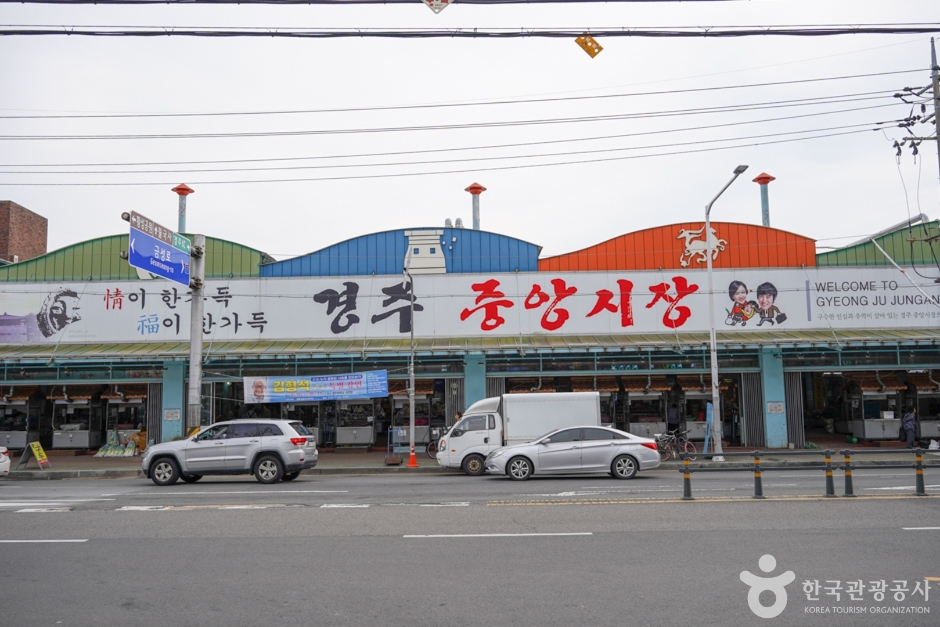
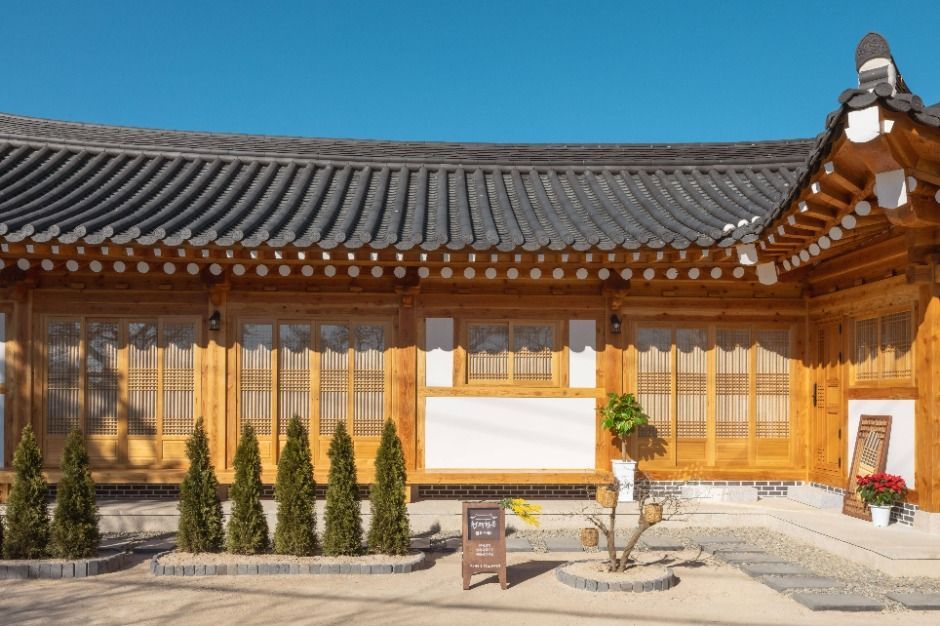
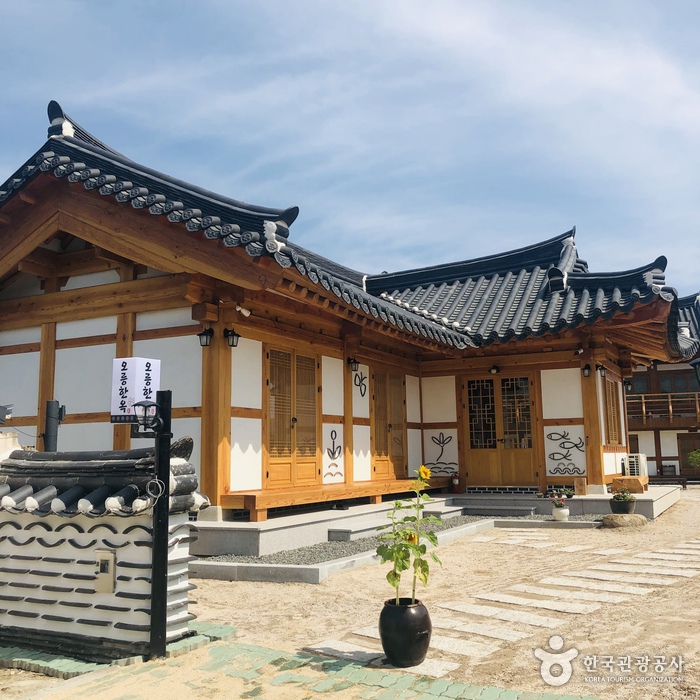
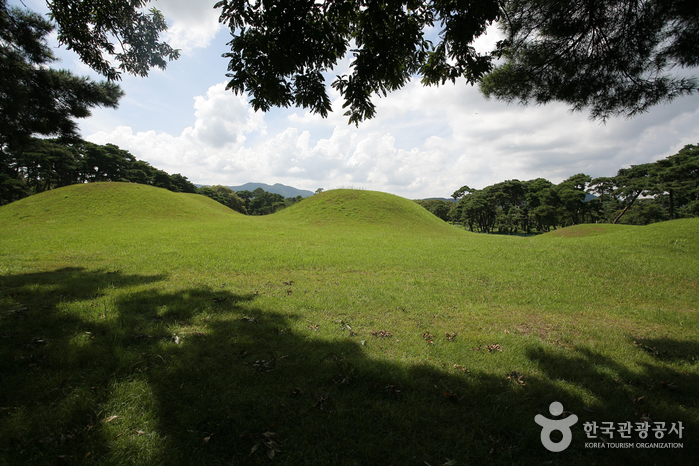
![Templo Bulguksa en Gyeongju (경주 불국사) [Patrimonio Cultural de la Humanidad de la Unesco]](http://tong.visitkorea.or.kr/cms/resource/03/2678603_image2_1.jpg)
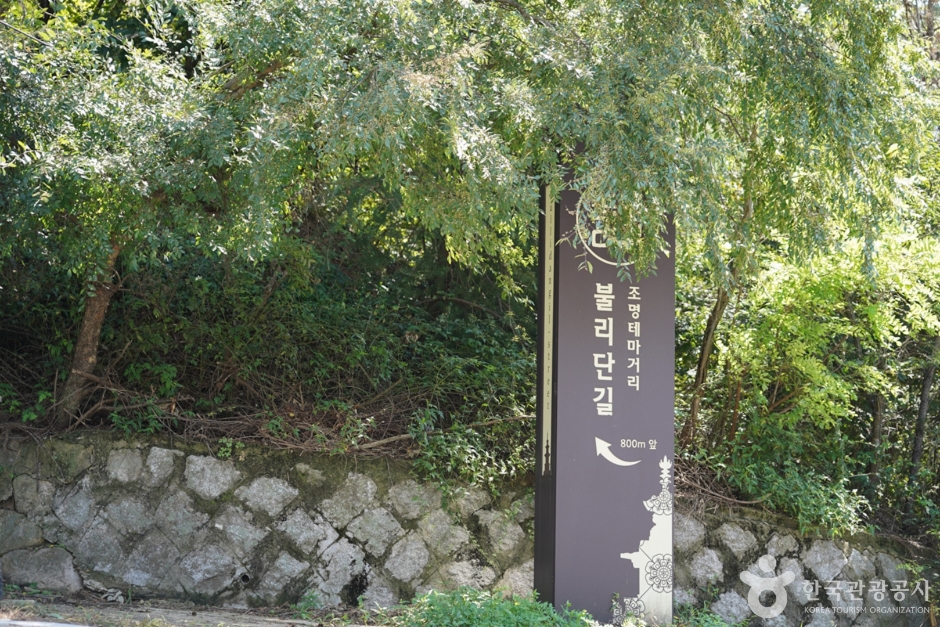
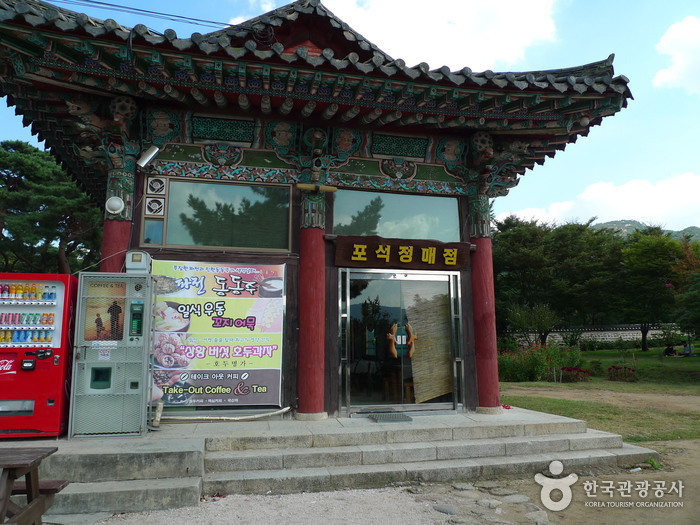
 Español
Español
 한국어
한국어 English
English 日本語
日本語 中文(简体)
中文(简体) Deutsch
Deutsch Français
Français Русский
Русский